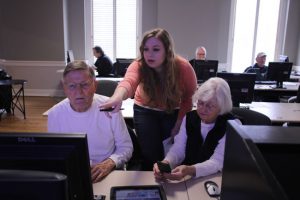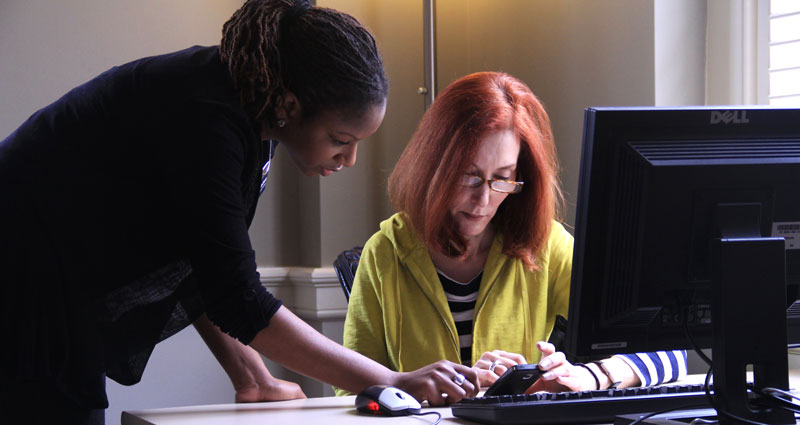Students in the Knight School of Communication at Queens are launching a set of online educational tools designed to help senior citizens learn new skills on their smartphones.
Five of the school’s top students in communication, digital media, or journalism – called Knight Scholars – have been researching, testing, and developing the educational materials throughout the academic year.
“We wanted to help senior citizens in this project because they are often overlooked when it comes to work in digital literacy,” said Jayme Keefer, a team leader on the initiative. “Our research indicates that seniors need technology support.” The other Knight Scholars are Zenzele Barnes, Naomi Bentley, Isabella Fagiani, and Connor Keith.
A study released by the Pew Research Center in April 2014 indicated that seniors lag behind younger Americans in the adoption of technology. “Many seniors remain largely unattached from online and mobile life – 41 percent do not use the internet at all, 53 percent do not have broadband access at home, and 23 percent do not use cell phones,” said a summary of the study.
Working in collaboration with the Cornwell Center at Myers Park Baptist Church, the Knight Scholars conducted a Charlotte survey and found that there was a need for senior-friendly tutorials for smartphones. Other Pew data indicates that 77 percent of older adults have a cell phone, and census data shows 30 percent growth in Charlotte’s 65-and-over population.
 Motivated by this, students began in October 2014 to develop tools to benefit seniors. They focused on mobile technologies because of high adoption rates and because many seniors say they need help.
Motivated by this, students began in October 2014 to develop tools to benefit seniors. They focused on mobile technologies because of high adoption rates and because many seniors say they need help.
Their solution was an interactive toolkit hosted on Digital Charlotte, tailored to fit the needs of senior citizens. The toolkit includes tutorials with step-by-step instructions in specific smartphone and tablet skills. The site enables seniors to read and print clear instructions for several mobile phone tasks that people encounter every day, including using Facebook, downloading apps, and connecting to wireless networks. When technical terms are necessary, students provided simple explanations in everyday language.
“We wanted to make sure that people could print out instructions, because our test sessions indicated that was a preference,” said Zenzele Barnes, another team leader. “We learned that these citizens liked to refer to a printed document, rather than watch an online video.”
Photography by Colton Garrett.
